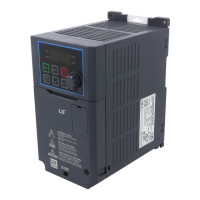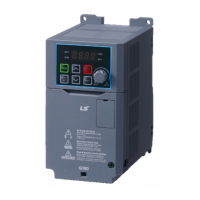Why does my LSIS LSLV-G100 Inverter Drive display Under Load?
- HHeidi BarrettJul 31, 2025
The LSIS Inverter Drive displays an underload message when the motor underload trip is activated, indicating that the actual load level is less than the configured level. This function operates when parameter Pr.27 is set to a value other than 0.


